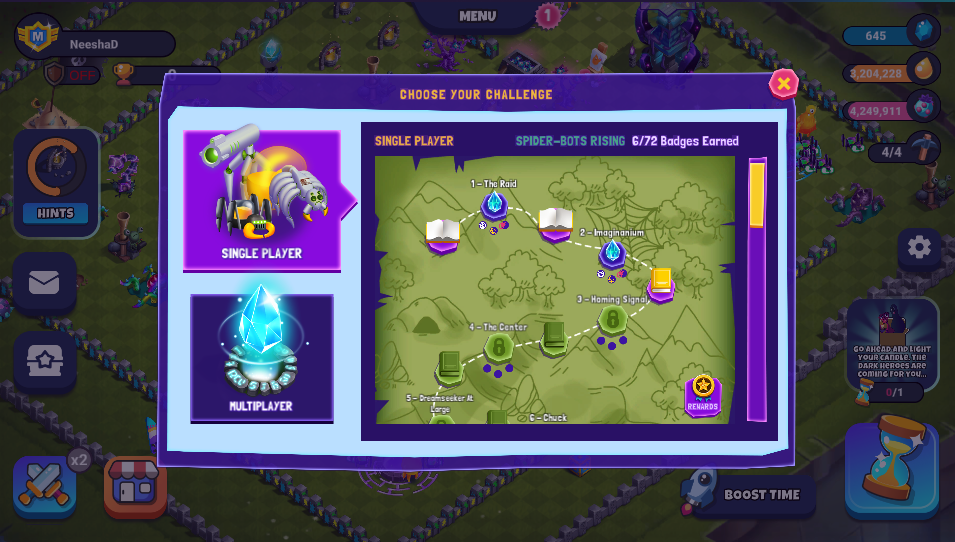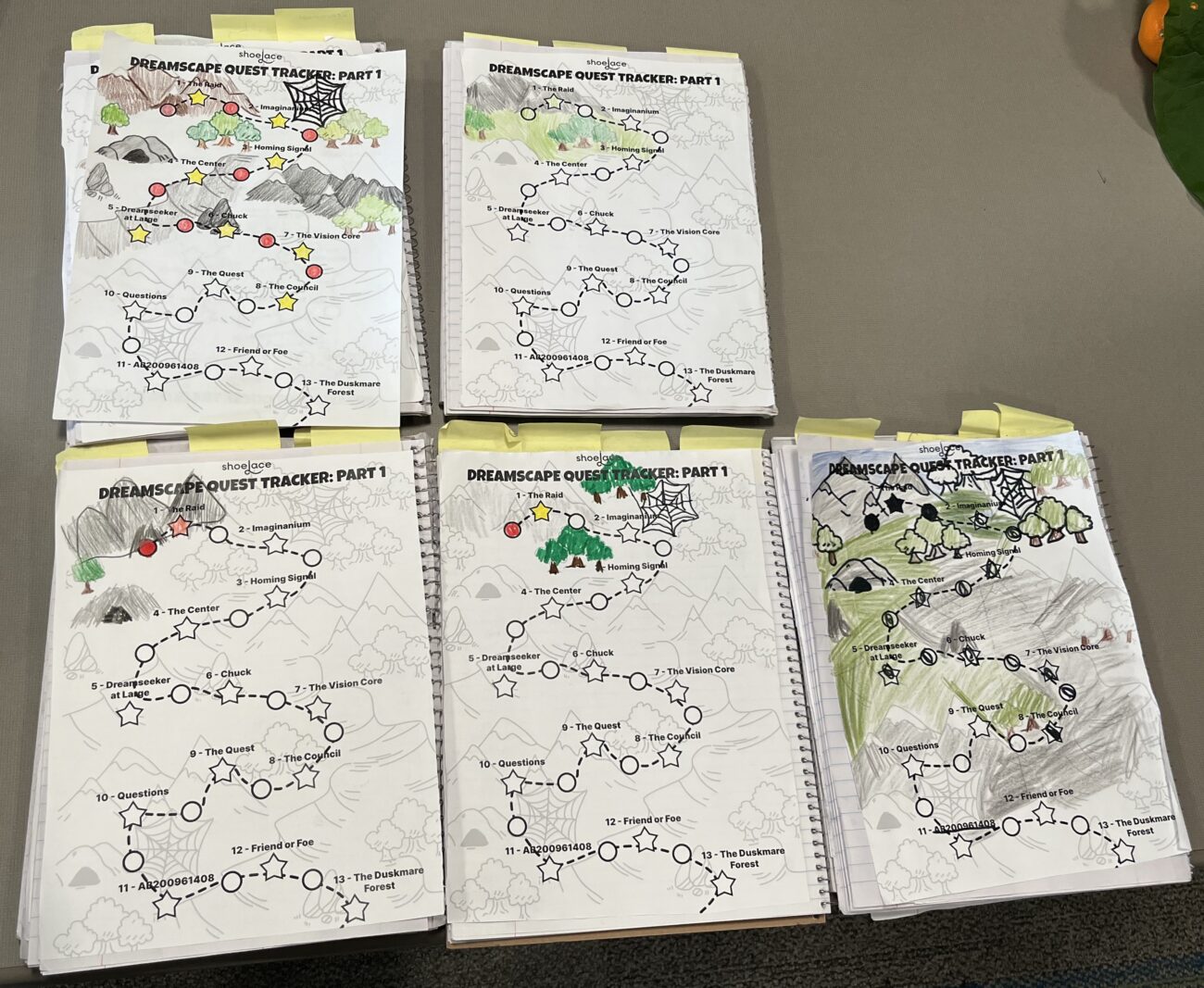

This is a guest post by Josh Wittenberger, a 4th grade teacher at Newaygo Elementary School in Michigan. He reached out to us to see if we had a printable version of the Single Player Quest map in Dreamscape his students could use to track their progress. We quickly spun one up and then asked if he’d share how he was using it.
One of the biggest challenges for students is not just completing their work, but seeing how their progress adds up over time. To make this more meaningful for my students, I’ve started using the Dreamscape Story Quest map glued into a data notebook as a way to set goals, track growth, and celebrate success.
A data notebook is a personal folder, notebook, or binder where students collect evidence of their learning in all subject areas. It gives them a place to record goals, track progress, and reflect on their achievements in a way that is organized and easy to revisit.
Here’s what I’m doing
Each week, my students set a simple goal:
- Read and answer the assigned questions. (Try to complete 1 or 2 levels)
- Color in their Dreamscape Story Quest map by shading in the correct level they’ve reached. I encourage them to take pride in it and color the surrounding picture as well.
The map serves as a visual tracker inside their data notebook. Every time they complete their questions, they update their map by coloring in the corresponding section. It’s both a reflection tool and a motivator—they can literally see their progress grow, one step at a time. I have also set goals with prize points. So when they reach a certain level I will give them some reward. Possible choice rewards are: Sickers, Lunch with Me, extra free time, extra snack, etc.
Here’s why I’m doing it this way
I want my students to take ownership of their learning. Too often, academic goals feel abstract, and students don’t always make the connection between effort and growth. By combining the Dreamscape Story Quest map with the data notebook, I’m giving them:
- A clear goal (answer the questions).
- A visual representation of progress (coloring the map).
- A sense of achievement (seeing their map fill in as they advance).
This process turns something as routine as answering comprehension questions into a visible, engaging, and personal journey.
Here’s a positive result
I’ve already noticed students are more motivated to finish their work because they want to update their maps. They’re asking, “Can I color my level now?” with genuine excitement. Even students who sometimes struggle with staying engaged are eager to see their progress represented. I see the maps used as evidence of persistence, growth, and goal-setting in action. This tone starts with the teacher.
By the end of the year, each student will have a complete map that tells the story of their progress. More importantly, they’ll have learned how setting small goals, working consistently, and celebrating milestones can help them achieve something bigger.
Want to do this activity with your own class? Sign up today and get your students playing their way to stronger reading comprehension. Find the map in the resources section of the teacher dashboard or click here to download it.